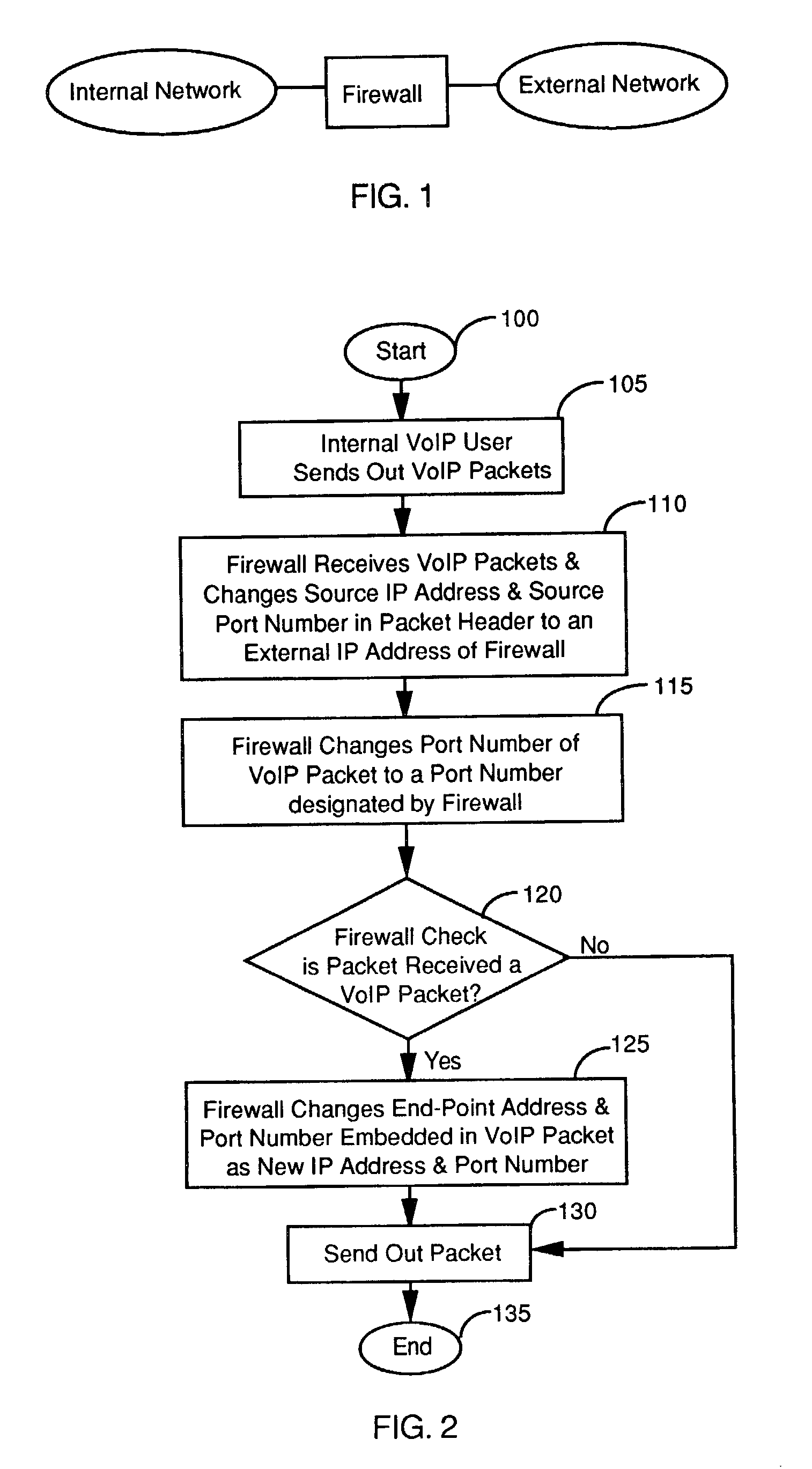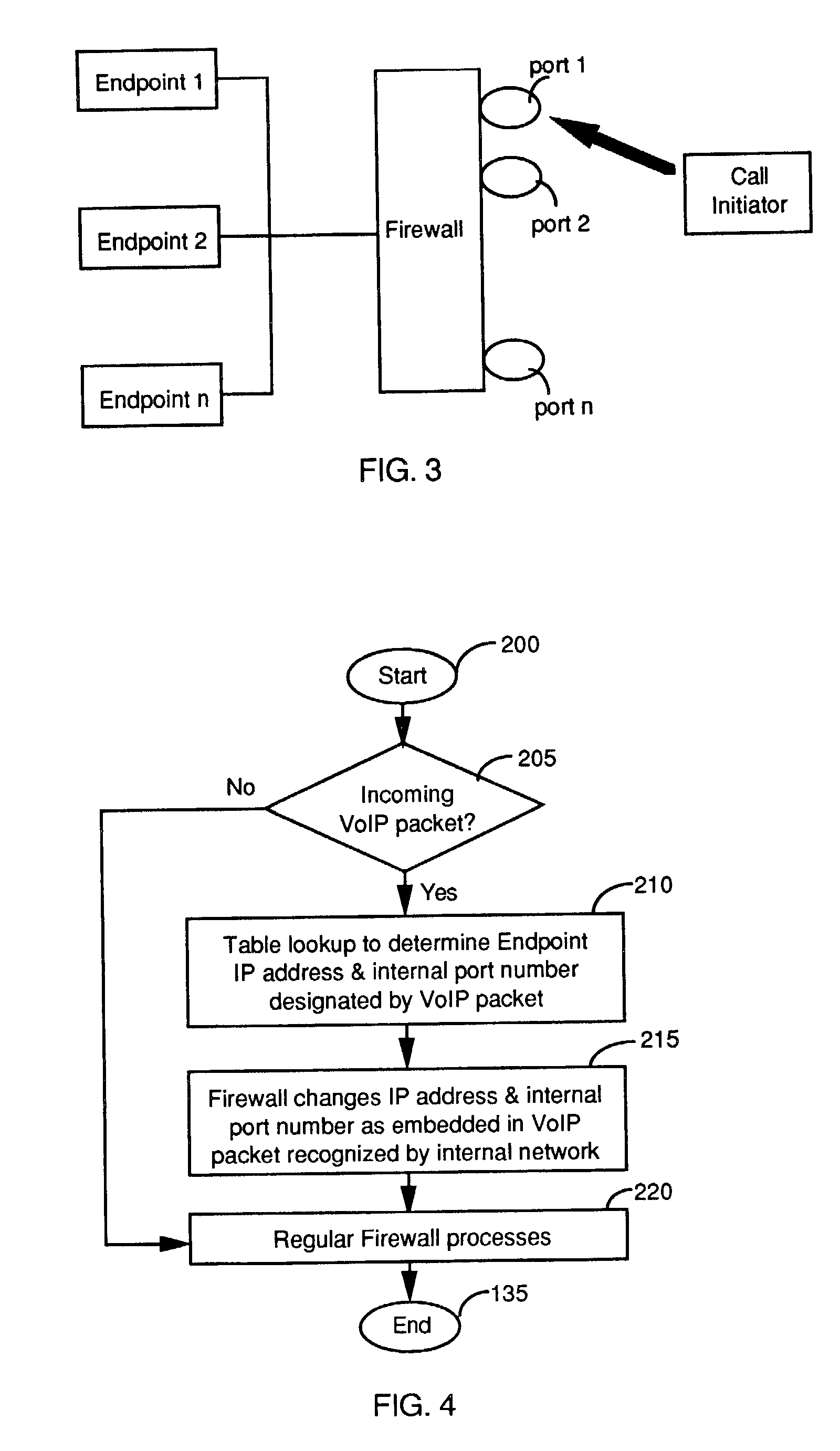Firewall interface configuration and processes to enable bi-directional VoIP traversal communications
- Summary
- Abstract
- Description
- Claims
- Application Information
AI Technical Summary
Benefits of technology
Problems solved by technology
Method used
Image
Examples
example 1
[0034] The device of this Example recognizes H.323 messages based on the standard port 1720-port address and parse the body of H.323 messages When it recognizes specific H.323 messages that carry the RTP / RTCP addresses, the NPG device creates the IP / Port mapping for the RTP traffic, which allows proper identification and address mapping of the RTP media stream between the calling and called devices in the private IP space and call host or IP gateways in the public space. It is assumed that a person of ordinary skill in the art possesses moderate level of knowledge of VoIP, RTP, H.323, H.225.0, H.245, VoIP's deployment in an enterprise network, and basic NAT technology.
[0035] The Core Intelligence of the NGP Device: H.323 Message Parsing
[0036] The processes of H.323 message parsing and translation of a typical Microsoft "Netmeeting session" setup is described. A Netmeeting uses the H.323 protocol for signaling and data transmission. VoIP calls through an IP PBX operate in a slightly ...
PUM
 Login to View More
Login to View More Abstract
Description
Claims
Application Information
 Login to View More
Login to View More - R&D
- Intellectual Property
- Life Sciences
- Materials
- Tech Scout
- Unparalleled Data Quality
- Higher Quality Content
- 60% Fewer Hallucinations
Browse by: Latest US Patents, China's latest patents, Technical Efficacy Thesaurus, Application Domain, Technology Topic, Popular Technical Reports.
© 2025 PatSnap. All rights reserved.Legal|Privacy policy|Modern Slavery Act Transparency Statement|Sitemap|About US| Contact US: help@patsnap.com



